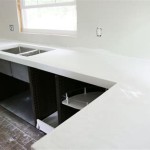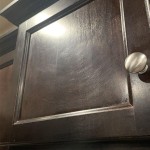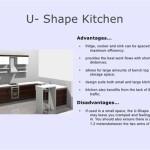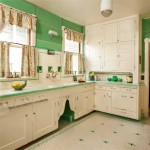Ada Kitchen Upper Cabinets Requirements
Designing a kitchen involves meticulous planning, particularly when it comes to upper cabinets. These cabinets play a vital role in maximizing storage space and enhancing the overall aesthetic appeal of the kitchen. For those considering Ada cabinets, a popular choice known for their quality and style, understanding their upper cabinet requirements is crucial for a successful installation. This article will delve into the essential considerations for Ada kitchen upper cabinets, providing insights into dimensions, materials, and design elements.
Cabinet Dimensions
The dimensions of Ada upper cabinets are typically standardized to ensure compatibility and ease of installation. However, it's important to consult with Ada directly or their authorized retailers for specific dimensions, as they may vary slightly depending on the cabinet style and model. When planning the placement and configuration of upper cabinets, consider these key measurements:
- Cabinet Depth: Ada upper cabinets usually come in standard depths ranging from 12 inches to 15 inches. This depth is adequate for storing most kitchenware while maintaining a comfortable reach.
- Cabinet Height: The height of upper cabinets is crucial for creating a balanced and visually appealing kitchen design. Ada cabinets typically offer heights ranging from 30 inches to 36 inches, allowing for customization based on ceiling height and personal preferences.
- Cabinet Width: The width of upper cabinets can be tailored to suit individual needs and kitchen layouts. Ada offers a variety of standard widths, including 12 inches, 18 inches, 24 inches, and 30 inches.
It's essential to consider the overall layout of the kitchen and the intended use of the upper cabinets. For instance, cabinets above the sink might require shallower depths for ease of access, while corner cabinets could benefit from customized dimensions for maximizing storage space.
Cabinet Materials
The material of Ada upper cabinets plays a significant role in their durability, aesthetics, and longevity. Ada offers a range of materials, each with its own unique characteristics:
- Wood: Wood is a classic and timeless material for kitchen cabinets, offering a natural warmth and elegance. Ada utilizes high-quality hardwoods such as maple, cherry, and oak, ensuring durability and resistance to scratches and dents.
- Laminate: Laminate is a cost-effective and versatile material that mimics the look of wood while offering increased resistance to moisture and stains. Ada offers a wide variety of laminate finishes, from traditional wood grains to modern abstract designs.
- Thermofoil: Thermofoil cabinets feature a vinyl film applied to a substrate, creating a smooth and durable finish. Ada’s thermofoil cabinets are available in various colors and patterns, offering a modern and sleek aesthetic.
- Painted: Painted finishes provide a clean and contemporary look for kitchen cabinets. Ada offers a wide range of paint colors and finishes, allowing for customization to match any kitchen design theme.
The choice of material depends on factors such as budget, desired aesthetic, and the intended use of the cabinets. For example, wood cabinets might be preferred for a traditional kitchen style, while laminate or thermofoil cabinets might be more suitable for a modern and budget-conscious approach.
Cabinet Design Elements
Beyond the core structural components, Ada upper cabinets offer a range of design elements that enhance their functionality and aesthetic appeal:
- Doors and Drawers: Ada offers a variety of door and drawer styles, ranging from traditional raised panels to modern flush panels. Consider factors such as ease of opening, storage needs, and overall design preferences when selecting door and drawer styles.
- Hardware: Door knobs, pulls, and hinges are essential design elements that can significantly impact the overall look and feel of Ada upper cabinets. Ada offers a wide selection of hardware in various finishes, allowing for customization based on personal preferences and kitchen style.
- Lighting: Under-cabinet lighting can enhance the functionality and aesthetics of Ada upper cabinets, illuminating the workspace below and creating a more inviting atmosphere. Ada offers various lighting options, including LED strips and recessed lighting.
- Molding and Trim: Molding and trim can add intricate details and a sophisticated touch to Ada upper cabinets. These elements can be used to create visual interest and complement the overall design theme.
Planning and considering these design elements will ensure that Ada upper cabinets perfectly complement the overall kitchen design and cater to specific needs and preferences.

Ada Kitchen Higher Cupboards Necessities Cabinet Dimensions Cabinets Height Measurements
Understanding The Difference Between A Break Room And Kitchen Rethink Access Registered Accessibility Specialist Tdlr Ras

Ada Inspections Nationwide Llc Compliancy
Obstructions Ada Accessibility Articles Rethink Access Registered Specialist Tdlr Ras

Designing A Wheelchair Accessible Kitchen

Ada Inspections Nationwide Llc Compliancy
Appliances Ada Accessibility Articles Rethink Access Registered Specialist Tdlr Ras

Ada Inspections Nationwide Llc Compliancy

Wheelchair Accessible Kitchens Ada Approved Compliant

Ada Inspections Nationwide Llc Compliancy
Related Posts








